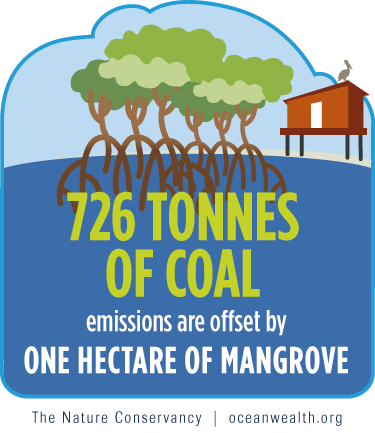
While only occupying 13.8 million hectares of tropical coastlines, per hectare mangroves are among the most carbon-rich forests in the world. Similar to terrestrial forests, mangroves capture carbon from the atmosphere via photosynthesis, and return some to the atmosphere through respiration and oxidation. The remaining carbon is stored in living biomass such as leaves, branches and roots. Through this process, carbon is stored in biomass for relatively shorter time scales of years to decades.
The true potential for mangrove climate mitigation lays in the soil, where, undisturbed, the carbon can remain stable for centuries or more. It is estimated the average age of 1.5 m of sediment in mangrove forest in Brazil to be between 400 and 770 years old.

We know, mangroves are an efficient carbon store, but we also know that not all mangroves are equal in this respect. Desert mangroves can be little more than shrubs, while in the wet tropics mangroves form vast forests with canopies 30-40 meters high. From a carbon-storage perspective, the latter are of particular importance, and knowing how much biomass is stored and where can be critical for optimizing efforts to achieve maximum returns on investment in conservation.
In addition to their significant role in carbon storage and sequestration, mangrove forests are also important for food production, coastal protection, water purification, and tourism, which is why there is an increasing need not only to prevent further loses, but to increase mangrove areas through restoration.
TNC has partnered with IUCN to develop a global model and map of mangrove restoration potential to help practitioners prioritize areas, and as a way to support and encourage mangrove restoration projects globally. Learn more about the project and explore the model here.
Explore Mangrove Ecosystem Services
Top image: © Nancy Sefton . Photo Credits in Text: © Tim Calver. Tiles (left to right): © Mark Godfrey, © Jonathan Kerr, © Ron Geatz






